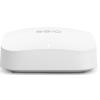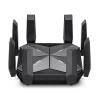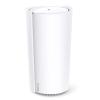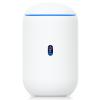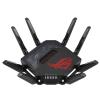Wi-Fi technology is moving fast, and if you're shopping for a new router, phone, or laptop, you've probably seen terms like Wi-Fi 6E and Wi-Fi 7 being thrown around. But what do they actually mean, and which one should you care about?
Let’s break it down simply.
What is Wi-Fi 6E?
Wi-Fi 6E is an extension of Wi-Fi 6. It does everything Wi-Fi 6 does, but it adds access to a brand-new band of airwaves called the 6 GHz band.
Most Wi-Fi devices before 6E only used 2.4 GHz and 5 GHz frequencies,
Wi-Fi 6E adds a third option, 6 GHz, which gives you:
- More bandwidth (think faster potential speeds)
- Less congestion (because fewer devices are using it)
- Lower latency (better for gaming and video calls)
Device Compatibility with 6 GHz
Not every device can connect to the 6 GHz band.
To use Wi-Fi 6E properly, you need both a Wi-Fi 6E compatible router and a device that supports Wi-Fi 6E, such as newer phones, laptops, or tablets.
If your device only supports Wi-Fi 6 or Wi-Fi 5, it will still work fine, but it will connect over the older 2.4 GHz or 5 GHz bands instead of 6 GHz.
Always check if your device specifically mentions Wi-Fi 6E support. Without it, you will not be able to use the faster and less crowded 6 GHz connection, even if your router supports it.
What is Wi-Fi 7?
Wi-Fi 7 is the next generation of Wi-Fi, and it builds on Wi-Fi 6E by making things even faster, smarter, and better at handling lots of devices at once.
Key improvements in Wi-Fi 7 include:
- Even faster speeds , theoretical speeds up to 4x faster than Wi-Fi 6E
- Better handling of congestion , perfect for smart homes with lots of connected devices
- Multi-Link Operation , allows devices to connect to multiple bands at once (2.4GHz, 5GHz, 6GHz) for more stable performance
- Lower latency , critical for cloud gaming, VR, and real-time applications
Wi-Fi 7 also still uses the 6 GHz band, like Wi-Fi 6E, but manages it much more efficiently.

Quick Comparison: Wi-Fi 6E vs Wi-Fi 7
| Feature | Wi-Fi 6E | Wi-Fi 7 |
|---|---|---|
| Bands Used | 2.4GHz, 5GHz, 6GHz | 2.4GHz, 5GHz, 6GHz |
| Max Speed Potential | Up to ~3.5 Gbps | Up to ~40 Gbps |
| Multi-Link Connections | No | Yes |
| Target Audience | High-end users | Future-proofing for ultra-fast homes and businesses |
| Available Devices | High-end 2022 to 2024 gear | Starting to release in 2025 |
Should You Upgrade?
If you already have Wi-Fi 6 or Wi-Fi 6E at home, you're still in great shape,
Most people today won’t immediately need Wi-Fi 7 unless:
- You have a very smart home with lots of connected devices
- You do a lot of 4K or 8K streaming, VR, or cloud gaming
- You want to future-proof your network for the next five to seven years
If you're buying a new router or device now:
- Getting a Wi-Fi 6E router is still a great, practical choice (and prices are dropping fast)
- If you want the latest and greatest, and you don’t mind paying a bit more, Wi-Fi 7 gear is starting to appear, but it is still early days
Final Thoughts
Wi-Fi 6E gave us a much-needed speed boost by opening up the 6 GHz band, Wi-Fi 7 takes it even further, promising lightning-fast, ultra-stable internet for the next generation of connected homes.
If you're upgrading today, Wi-Fi 6E is an excellent move, but if you can wait a little longer or spot a good deal, Wi-Fi 7 is the one to watch.


